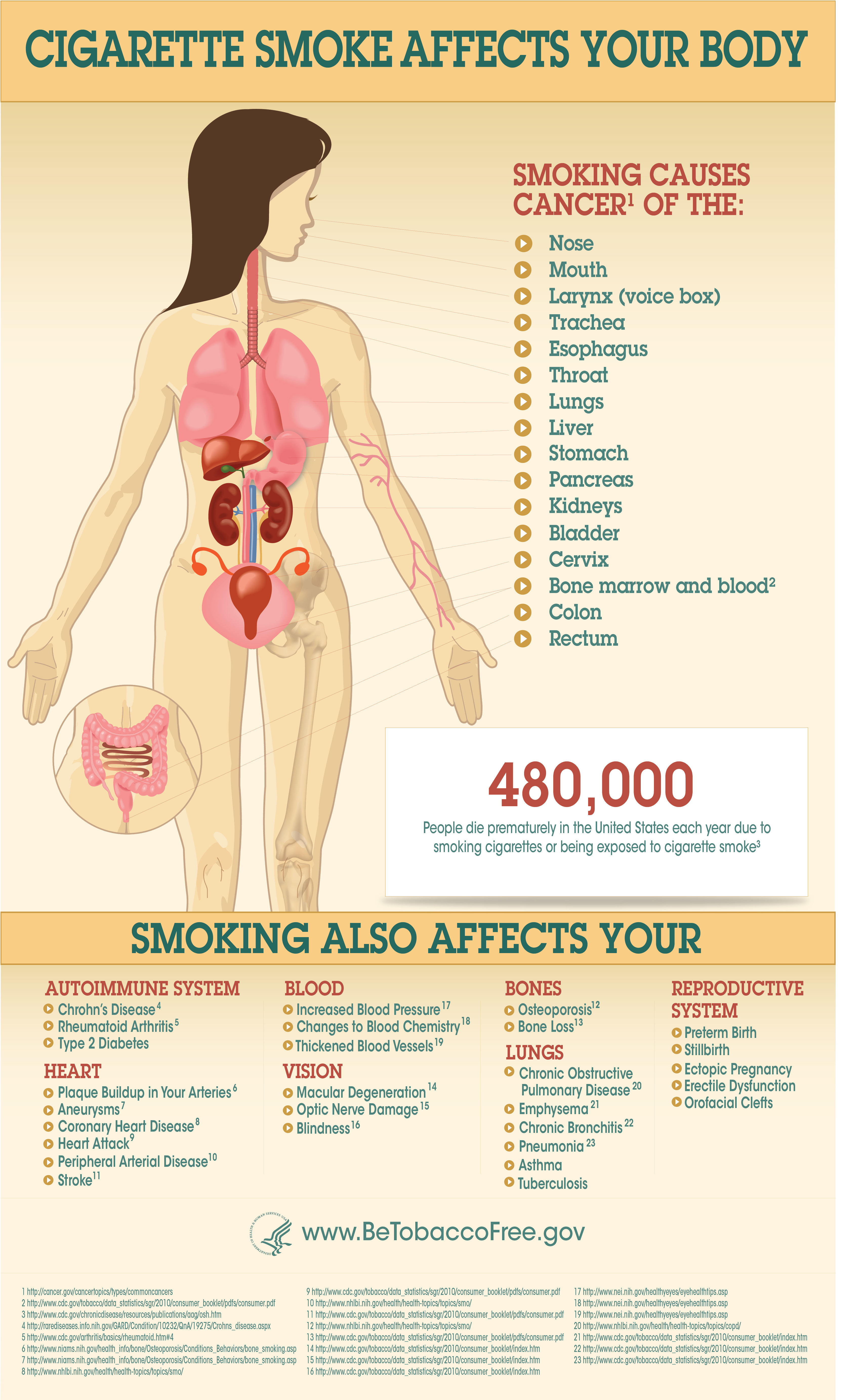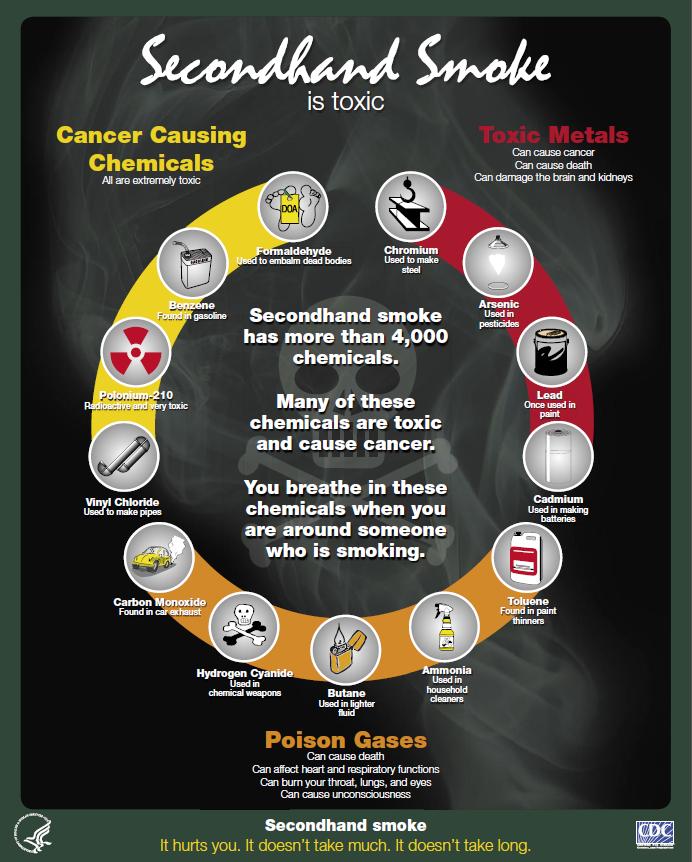HEALTH IMPACT

Smoking harms nearly every organ in the body and is the single greatest cause of preventable morbidity and mortality in the United States.1
It is a modifiable risk factor in the development of the top three causes of female deaths in Maryland: heart disease, cancers, and stroke.
Cardiovascular Disease
Heart Disease
-
Heart disease is the leading cause of female deaths in Maryland.2
-
Compared to nonsmokers,
the risk of myocardial infarction is increased six-fold in women who smoke.3
-
Regardless of what age a women stops smoking, smoking cessation substantially reduces the excess risk of coronary heart disease within 1-2 years.1
Stroke
Stroke is the third leading cause of female deaths in Maryland.2
Women who smoke have an increased risk for ischemic stroke and subarachnoid hemorrhage.1
After 5 to 15 years of smoking cessation, the risk of stroke development approaches that of a women who has never smoked.1
Cancers
1 out of every 3 cancer deaths that occur in the United States annually could be prevented if nobody smoked.4
Lung Cancer
-
Lung cancer is the leading cause of female cancer deaths in Maryland.2
-
Approximately 90% of all lung cancer cases are attributable to smoking or exposure to tobacco smoke.1,3
-
This risk for developing lung cancer declines with each year of smoking cessation.1
Breast Cancer
-
Breast cancer is the second leading cause of female cancer deaths in Maryland.2
-
The risk of developing breast cancer is highest in women who began smoking at an earlier age, particularly if smoking is initiated before the birth of their first child.3,5
Colon Cancer
-
Colon cancer is the third leading cause of female cancer deaths in Maryland.2
-
Long-term cigarette smoking is associated with an increased risk of colorectal cancer, even after accounting for other known risk factors. The longer a person smokes, the greater their risk.3,6
Gynecologic Cancer
-
Smoking does not increase a women’s risk of developing ovarian cancer overall, but it does increase the risk for the development of mucinous ovarian cancers.3,7
-
Both active and passive smoking are associated with an increased risk of cervical neoplasia.3,8
Other Cancers:
-
Mouth4
-
Nose4
-
Larynx4
-
Trachearachea4
-
Esophagus4
-
Stomach4
-
Pancreas4
-
Kidneys and ureters4
-
Bladder4
-
Bone marrow4
-
Blood4
Chronic Obstructive Pulmonary Disease (COPD)
Diabetes
Smoking is associated with more difficult glycemic control, which leads to higher risk of organ damage, e.g. heart disease, nephropathy, retinopathy, and peripheral neuropathy.4
Reproductive Health
-
Smoking has been linked to increased incidence of:
-
Infertility9
-
Ectopic pregnancy9
-
Spontaneous abortion (miscarriage)9
-
Earlier onset menopause9

Osteoporosis
Secondhand Smoke
This is not a comprehensive list of the adverse health effects of tobacco use, rather this is meant to highlight diseases with high morbidity and mortality and issues of particular interest to women’s health.
Resources
-
Women and Smoking: A Report of the Surgeon General. Retrieved September 30, 2014 from Centers for Disease Control and Prevention Website:
http://www.cdc.gov/tobacco/data_statistics/sgr/2001/complete_report/index.htm.
Gaudet, MM et al. (2013). Active Smoking and Breast Cancer Risk: Original Cohort Data and Meta-analysis.
Journal of the National Cancer Institute 105. 515-25.
Hannan LM, Jacobs EJ, Thun MJ. (2009).
The Association Between Cigarette Smoking and Risk of Colorectal Cancer in a Large Prospective Cohort from the United States. Cancer Epidemiology, Biomarkers, and Prevention 18. 3362-7.
Tworoger SS et al. (2008). Caffeine, Alcohol, Smoking, and the Risk of Incident Epithelial Ovarian Cancer. Cancer 112. 1169-77.
Trimble CL et al. (2005) Active and Passive Cigarette Smoking and the Risk of Cervical Neoplasia. Obstetrics and Gynecology 105. 174-81.
The Practice Committee of the American Society for Reproductive Medicine. (2012). Smoking and Infertility: A Committee Opinion. American Society for Reproductive Medicine 98. 1400-6.
The images on this page are in the public domain and were obtained from
BeTobaccoFree.gov.
October 2014

